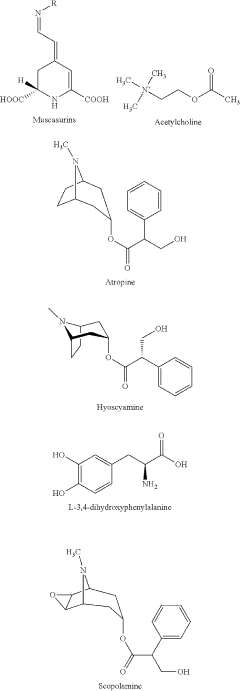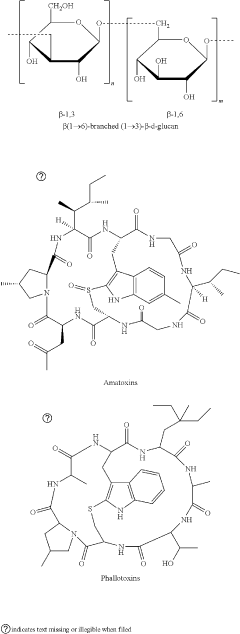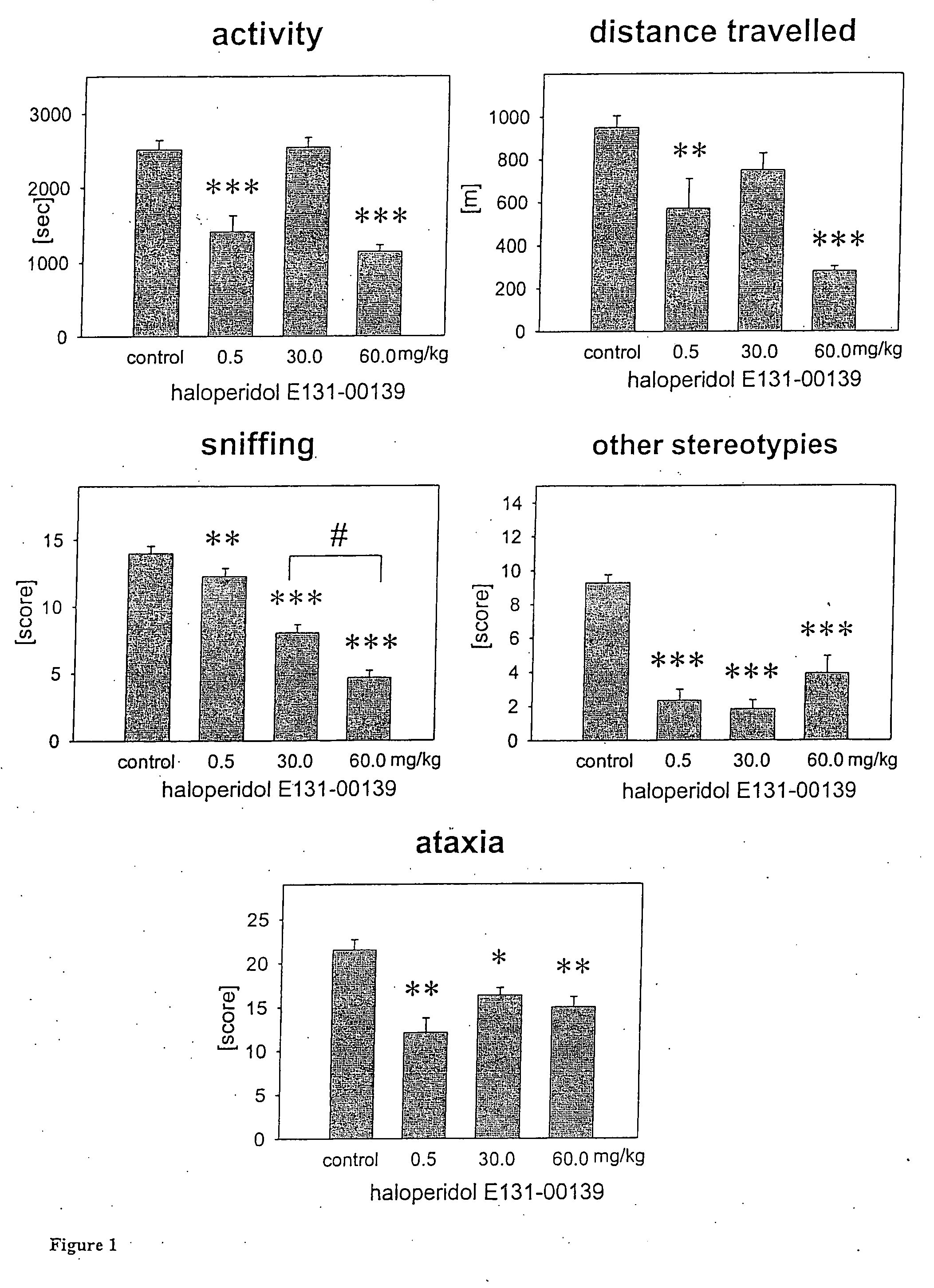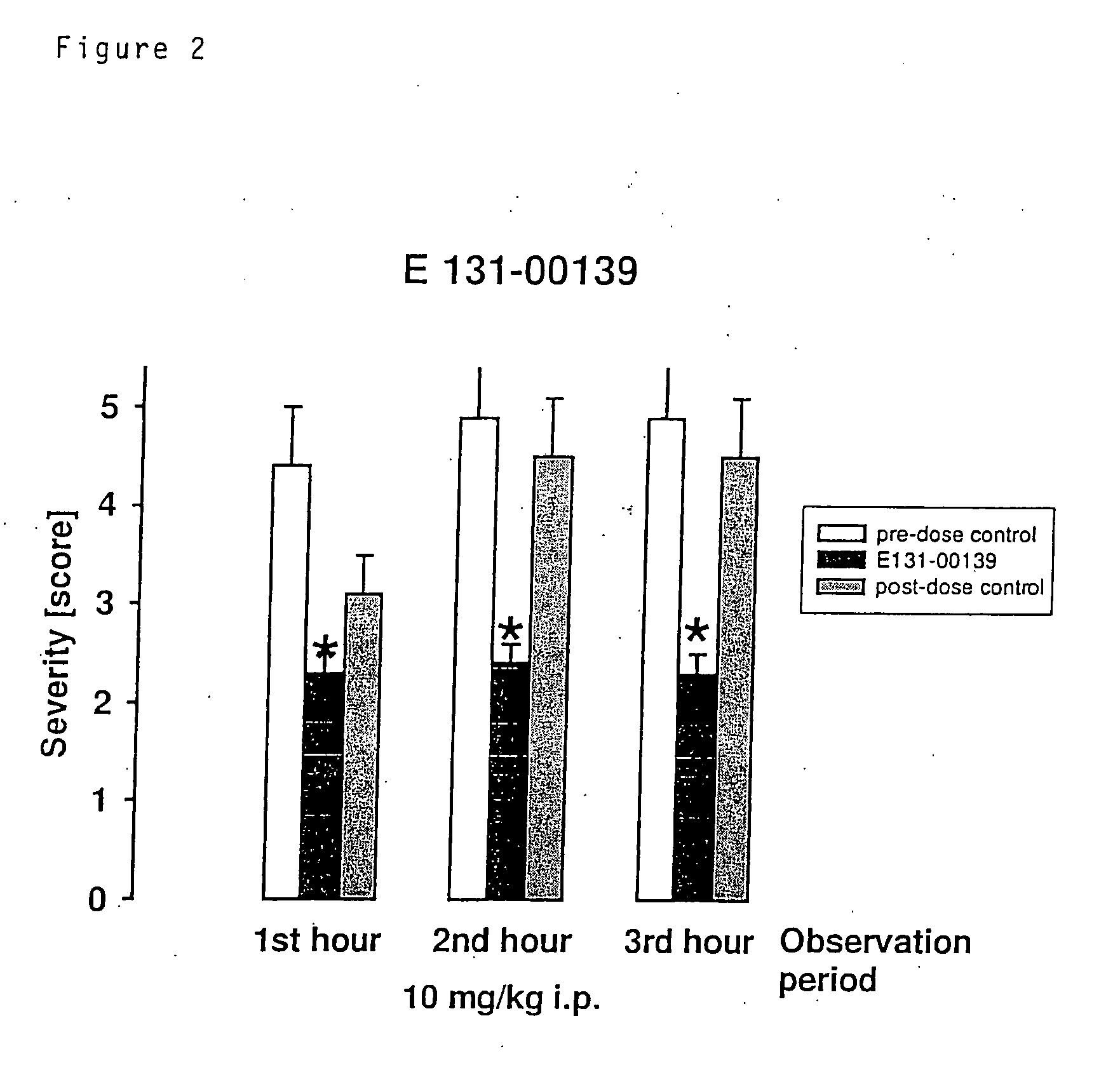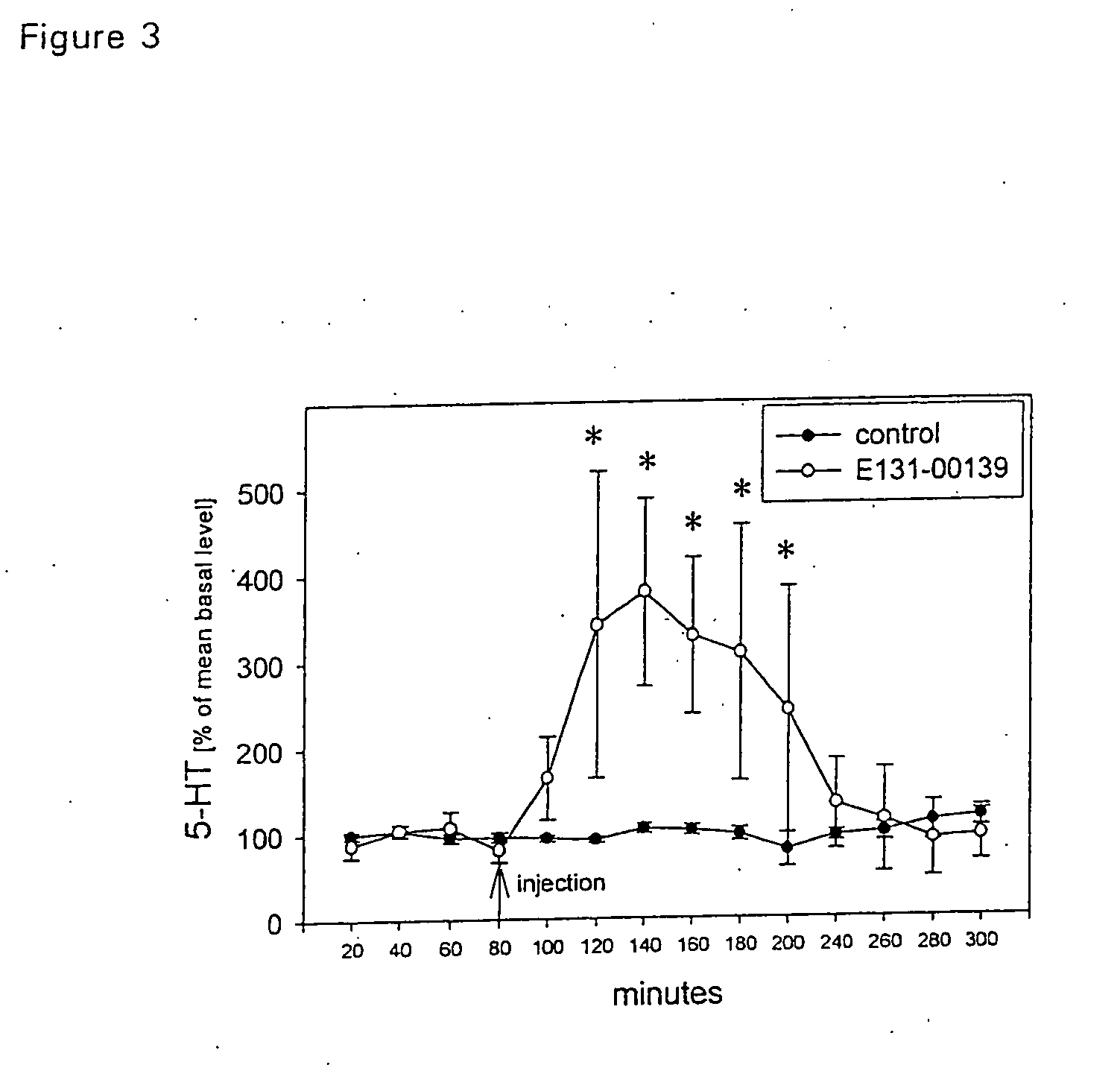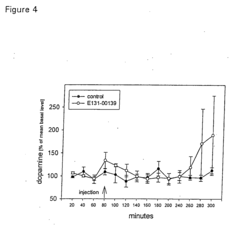Exploring GABAergic Circuitry Through Muscimol Lens
JUL 4, 20259 MIN READ
Generate Your Research Report Instantly with AI Agent
Patsnap Eureka helps you evaluate technical feasibility & market potential.
GABAergic Circuitry Background and Objectives
GABAergic circuitry plays a crucial role in regulating neural activity throughout the central nervous system. This inhibitory network, mediated by gamma-aminobutyric acid (GABA), has been a subject of intense research for decades. The exploration of GABAergic circuitry through the lens of muscimol, a potent GABA receptor agonist, has provided valuable insights into the function and structure of these neural pathways.
The study of GABAergic circuitry has evolved significantly since the discovery of GABA as a neurotransmitter in the 1950s. Initially, research focused on understanding the basic mechanisms of GABA signaling and its role in neural inhibition. As technology advanced, researchers began to unravel the complex architecture of GABAergic networks and their diverse functions in various brain regions.
In recent years, the field has witnessed a surge in interest due to the potential implications of GABAergic dysfunction in neurological and psychiatric disorders. This has led to a renewed focus on developing tools and techniques to manipulate and study these circuits with greater precision. Muscimol, derived from the mushroom Amanita muscaria, has emerged as a powerful tool in this endeavor.
The primary objective of exploring GABAergic circuitry through muscimol is to gain a deeper understanding of the functional organization of inhibitory networks in the brain. By selectively activating GABA receptors, researchers aim to map the distribution and connectivity of GABAergic neurons, as well as their influence on local and long-range neural circuits.
Another key goal is to elucidate the role of GABAergic signaling in various cognitive processes, including learning, memory, and decision-making. By using muscimol to modulate GABAergic activity in specific brain regions, researchers can investigate how inhibitory circuits contribute to these complex behaviors.
Furthermore, this research seeks to uncover the therapeutic potential of targeting GABAergic circuits in treating neurological and psychiatric disorders. Understanding how muscimol affects these circuits could lead to the development of more targeted and effective treatments for conditions such as epilepsy, anxiety, and schizophrenia.
As the field progresses, there is a growing emphasis on integrating muscimol-based studies with other cutting-edge neuroscience techniques. This includes combining pharmacological manipulations with optogenetics, chemogenetics, and high-resolution imaging to provide a more comprehensive view of GABAergic circuit function.
The exploration of GABAergic circuitry through muscimol also aims to address fundamental questions about neural computation and information processing in the brain. By manipulating inhibitory signaling, researchers hope to gain insights into how the balance between excitation and inhibition shapes neural dynamics and network function.
The study of GABAergic circuitry has evolved significantly since the discovery of GABA as a neurotransmitter in the 1950s. Initially, research focused on understanding the basic mechanisms of GABA signaling and its role in neural inhibition. As technology advanced, researchers began to unravel the complex architecture of GABAergic networks and their diverse functions in various brain regions.
In recent years, the field has witnessed a surge in interest due to the potential implications of GABAergic dysfunction in neurological and psychiatric disorders. This has led to a renewed focus on developing tools and techniques to manipulate and study these circuits with greater precision. Muscimol, derived from the mushroom Amanita muscaria, has emerged as a powerful tool in this endeavor.
The primary objective of exploring GABAergic circuitry through muscimol is to gain a deeper understanding of the functional organization of inhibitory networks in the brain. By selectively activating GABA receptors, researchers aim to map the distribution and connectivity of GABAergic neurons, as well as their influence on local and long-range neural circuits.
Another key goal is to elucidate the role of GABAergic signaling in various cognitive processes, including learning, memory, and decision-making. By using muscimol to modulate GABAergic activity in specific brain regions, researchers can investigate how inhibitory circuits contribute to these complex behaviors.
Furthermore, this research seeks to uncover the therapeutic potential of targeting GABAergic circuits in treating neurological and psychiatric disorders. Understanding how muscimol affects these circuits could lead to the development of more targeted and effective treatments for conditions such as epilepsy, anxiety, and schizophrenia.
As the field progresses, there is a growing emphasis on integrating muscimol-based studies with other cutting-edge neuroscience techniques. This includes combining pharmacological manipulations with optogenetics, chemogenetics, and high-resolution imaging to provide a more comprehensive view of GABAergic circuit function.
The exploration of GABAergic circuitry through muscimol also aims to address fundamental questions about neural computation and information processing in the brain. By manipulating inhibitory signaling, researchers hope to gain insights into how the balance between excitation and inhibition shapes neural dynamics and network function.
Muscimol Market Analysis
The muscimol market has shown significant growth potential in recent years, driven by increasing research activities in neuroscience and the expanding applications of GABAergic compounds in various therapeutic areas. The global market for muscimol and related GABA receptor agonists is expected to experience steady growth over the coming years, with a compound annual growth rate (CAGR) projected to be in the mid-single digits.
The primary demand for muscimol comes from research institutions and pharmaceutical companies engaged in studying GABAergic circuitry and developing novel treatments for neurological disorders. The rising prevalence of conditions such as epilepsy, anxiety disorders, and insomnia has fueled interest in GABA-targeting compounds, including muscimol, as potential therapeutic agents.
In the pharmaceutical sector, muscimol's market potential is closely tied to its role in drug discovery and development processes. As a selective GABA-A receptor agonist, muscimol serves as a valuable tool for investigating the mechanisms of GABAergic neurotransmission and for screening potential drug candidates targeting GABA receptors. This has led to increased demand from pharmaceutical companies and contract research organizations (CROs) involved in preclinical studies and early-stage drug development.
The academic research segment represents another significant market for muscimol. Neuroscience departments in universities and research institutes worldwide use muscimol for various experimental purposes, including electrophysiological studies, behavioral assays, and neuroimaging investigations. The growing interest in understanding the complexities of neural circuits and their role in behavior and cognition has further bolstered the demand for muscimol in this sector.
Geographically, North America and Europe currently dominate the muscimol market, owing to their well-established research infrastructure and high concentration of pharmaceutical companies. However, the Asia-Pacific region is expected to witness the fastest growth in the coming years, driven by increasing investments in life sciences research and the expansion of the pharmaceutical industry in countries like China and India.
The market for muscimol faces certain challenges, including regulatory constraints on the use of GABAergic compounds and the limited commercial applications beyond research settings. However, ongoing research into the therapeutic potential of muscimol and related compounds in treating various neurological and psychiatric disorders could open up new market opportunities in the future.
As the field of neuroscience continues to advance, the demand for specialized research tools like muscimol is likely to grow. This trend, coupled with the increasing focus on personalized medicine and targeted therapies, suggests a positive outlook for the muscimol market in the coming years. However, market players will need to navigate regulatory challenges and invest in research and development to fully capitalize on the potential opportunities in this niche but promising market segment.
The primary demand for muscimol comes from research institutions and pharmaceutical companies engaged in studying GABAergic circuitry and developing novel treatments for neurological disorders. The rising prevalence of conditions such as epilepsy, anxiety disorders, and insomnia has fueled interest in GABA-targeting compounds, including muscimol, as potential therapeutic agents.
In the pharmaceutical sector, muscimol's market potential is closely tied to its role in drug discovery and development processes. As a selective GABA-A receptor agonist, muscimol serves as a valuable tool for investigating the mechanisms of GABAergic neurotransmission and for screening potential drug candidates targeting GABA receptors. This has led to increased demand from pharmaceutical companies and contract research organizations (CROs) involved in preclinical studies and early-stage drug development.
The academic research segment represents another significant market for muscimol. Neuroscience departments in universities and research institutes worldwide use muscimol for various experimental purposes, including electrophysiological studies, behavioral assays, and neuroimaging investigations. The growing interest in understanding the complexities of neural circuits and their role in behavior and cognition has further bolstered the demand for muscimol in this sector.
Geographically, North America and Europe currently dominate the muscimol market, owing to their well-established research infrastructure and high concentration of pharmaceutical companies. However, the Asia-Pacific region is expected to witness the fastest growth in the coming years, driven by increasing investments in life sciences research and the expansion of the pharmaceutical industry in countries like China and India.
The market for muscimol faces certain challenges, including regulatory constraints on the use of GABAergic compounds and the limited commercial applications beyond research settings. However, ongoing research into the therapeutic potential of muscimol and related compounds in treating various neurological and psychiatric disorders could open up new market opportunities in the future.
As the field of neuroscience continues to advance, the demand for specialized research tools like muscimol is likely to grow. This trend, coupled with the increasing focus on personalized medicine and targeted therapies, suggests a positive outlook for the muscimol market in the coming years. However, market players will need to navigate regulatory challenges and invest in research and development to fully capitalize on the potential opportunities in this niche but promising market segment.
GABAergic Research Challenges
GABAergic research faces several significant challenges that hinder our comprehensive understanding of inhibitory neurotransmission and its role in neural circuits. One of the primary obstacles is the complexity and diversity of GABAergic interneurons, which exhibit a wide range of morphological, physiological, and molecular characteristics. This heterogeneity makes it difficult to develop targeted approaches for studying specific subpopulations of GABAergic neurons and their functions within neural networks.
Another major challenge lies in the dynamic nature of GABAergic signaling. GABA can exert both inhibitory and excitatory effects depending on the developmental stage, brain region, and specific cellular context. This dual role complicates the interpretation of experimental results and necessitates careful consideration of multiple factors when designing and analyzing studies involving GABAergic circuits.
The spatial and temporal resolution of current techniques for monitoring GABAergic activity in vivo remains a significant limitation. While advances in optogenetics and calcium imaging have improved our ability to manipulate and observe neural activity, these methods still struggle to capture the rapid and localized nature of GABAergic transmission, particularly at the level of individual synapses.
Furthermore, the interaction between GABAergic signaling and other neurotransmitter systems presents a complex web of regulatory mechanisms that are challenging to disentangle. The cross-talk between GABA and glutamate, as well as neuromodulators like dopamine and serotonin, creates intricate feedback loops that influence neural circuit function in ways that are difficult to predict and model accurately.
The development of selective pharmacological tools for GABAergic research also poses significant challenges. While compounds like muscimol offer valuable insights, their off-target effects and limited specificity for GABA receptor subtypes constrain their utility in dissecting the fine details of GABAergic circuitry. The creation of more selective and potent agonists and antagonists for specific GABA receptor subunits remains an ongoing challenge in the field.
Lastly, translating findings from animal models to human GABAergic function presents its own set of difficulties. Species differences in GABAergic circuit organization and function, as well as the limitations of studying human brain tissue, create obstacles in applying preclinical research to clinical applications. Bridging this gap requires innovative approaches that combine human neuroimaging, post-mortem studies, and advanced in vitro models of human neural circuits.
Another major challenge lies in the dynamic nature of GABAergic signaling. GABA can exert both inhibitory and excitatory effects depending on the developmental stage, brain region, and specific cellular context. This dual role complicates the interpretation of experimental results and necessitates careful consideration of multiple factors when designing and analyzing studies involving GABAergic circuits.
The spatial and temporal resolution of current techniques for monitoring GABAergic activity in vivo remains a significant limitation. While advances in optogenetics and calcium imaging have improved our ability to manipulate and observe neural activity, these methods still struggle to capture the rapid and localized nature of GABAergic transmission, particularly at the level of individual synapses.
Furthermore, the interaction between GABAergic signaling and other neurotransmitter systems presents a complex web of regulatory mechanisms that are challenging to disentangle. The cross-talk between GABA and glutamate, as well as neuromodulators like dopamine and serotonin, creates intricate feedback loops that influence neural circuit function in ways that are difficult to predict and model accurately.
The development of selective pharmacological tools for GABAergic research also poses significant challenges. While compounds like muscimol offer valuable insights, their off-target effects and limited specificity for GABA receptor subtypes constrain their utility in dissecting the fine details of GABAergic circuitry. The creation of more selective and potent agonists and antagonists for specific GABA receptor subunits remains an ongoing challenge in the field.
Lastly, translating findings from animal models to human GABAergic function presents its own set of difficulties. Species differences in GABAergic circuit organization and function, as well as the limitations of studying human brain tissue, create obstacles in applying preclinical research to clinical applications. Bridging this gap requires innovative approaches that combine human neuroimaging, post-mortem studies, and advanced in vitro models of human neural circuits.
Current Muscimol Applications
01 GABAergic circuit design and implementation
This category focuses on the design and implementation of GABAergic circuits in various applications. It includes techniques for creating and optimizing neural networks that mimic GABAergic signaling, as well as methods for integrating these circuits into larger systems. The designs aim to replicate the inhibitory functions of GABA in artificial systems, potentially for use in neuromorphic computing or biomedical applications.- GABAergic circuit design and implementation: This category focuses on the design and implementation of GABAergic circuits in various applications. It includes techniques for creating and optimizing neural networks that mimic GABAergic signaling, as well as methods for integrating these circuits into electronic devices or systems. The designs aim to replicate the inhibitory functions of GABA in artificial systems.
- GABAergic circuitry in neuromorphic computing: This area explores the application of GABAergic circuitry principles in neuromorphic computing systems. It involves developing hardware and software architectures that emulate the function of GABAergic neurons and synapses. These systems aim to improve the efficiency and performance of artificial neural networks by incorporating inhibitory signaling mechanisms.
- GABAergic circuit modeling and simulation: This category encompasses methods and tools for modeling and simulating GABAergic circuits. It includes computational approaches to predict circuit behavior, analyze network dynamics, and optimize circuit parameters. These models help researchers understand the complex interactions within GABAergic networks and their effects on overall brain function.
- GABAergic circuitry in signal processing: This area focuses on applying GABAergic circuit principles to signal processing applications. It involves developing algorithms and hardware implementations that leverage inhibitory signaling mechanisms for tasks such as noise reduction, pattern recognition, and data compression. These approaches aim to improve the efficiency and accuracy of signal processing systems.
- Integration of GABAergic circuitry in microelectronic devices: This category deals with the integration of GABAergic circuit elements into microelectronic devices and systems. It includes techniques for fabricating and incorporating inhibitory signaling components into semiconductor devices, as well as methods for optimizing their performance and energy efficiency. These innovations aim to enhance the functionality of electronic systems by mimicking biological neural networks.
02 GABAergic circuitry in semiconductor devices
This area explores the incorporation of GABAergic circuit principles into semiconductor devices. It involves developing specialized transistors, memory cells, or other semiconductor components that can emulate GABAergic neurotransmission. These innovations may lead to more efficient and biologically-inspired electronic systems, potentially improving performance in areas such as signal processing and pattern recognition.Expand Specific Solutions03 GABAergic circuitry in neural interfaces
This category addresses the application of GABAergic circuitry principles in developing neural interfaces. It includes methods for creating biocompatible electronic systems that can interact with natural GABAergic neurons, potentially for use in brain-computer interfaces or neuroprosthetics. The focus is on accurately detecting, interpreting, and potentially modulating GABAergic signaling in biological systems.Expand Specific Solutions04 GABAergic circuit modeling and simulation
This area involves the development of computational models and simulation techniques for GABAergic circuits. It includes creating software tools and algorithms that can accurately represent the behavior of GABAergic neurons and networks. These models can be used for research purposes, drug discovery, or to inform the design of artificial neural networks inspired by GABAergic systems.Expand Specific Solutions05 GABAergic circuitry in signal processing
This category explores the application of GABAergic circuit principles in signal processing systems. It involves developing novel architectures and algorithms inspired by GABAergic inhibition to improve signal filtering, noise reduction, and pattern recognition. These innovations may lead to more efficient and robust signal processing techniques in various fields, including telecommunications and image processing.Expand Specific Solutions
Key Players in GABAergic Research
The exploration of GABAergic circuitry through muscimol lens is in a nascent stage of development, with the market still emerging. The competitive landscape is characterized by a mix of academic institutions, pharmaceutical companies, and research organizations. Key players like Vertex Pharmaceuticals, Johnson & Johnson, and Merck & Co. are investing in this field, leveraging their expertise in neuroscience and drug development. The technology's maturity is still evolving, with ongoing research at institutions such as the University of California and Sorbonne Université. While the market size is currently limited, the potential applications in neurology and psychiatry suggest significant growth opportunities. As the understanding of GABAergic systems deepens, we can expect increased competition and innovation in this space.
Institut National de la Santé et de la Recherche Médicale
Technical Solution: The Institut National de la Santé et de la Recherche Médicale (INSERM) has made significant contributions to the study of GABAergic circuitry using muscimol as a tool. Their research focuses on understanding the role of GABAergic interneurons in various neurological and psychiatric disorders. INSERM scientists have developed innovative pharmacological approaches combining muscimol with other GABA modulators to dissect the complex interactions within GABAergic networks[2]. They have also pioneered the use of in vivo microdialysis techniques to study the effects of muscimol on neurotransmitter release in specific brain regions[4]. This approach has provided valuable insights into the modulatory effects of GABAergic signaling on other neurotransmitter systems. Additionally, INSERM researchers have utilized advanced electrophysiological recording techniques, such as multi-electrode arrays, to investigate the impact of muscimol-induced GABAergic activation on neural network dynamics and oscillatory patterns[5].
Strengths: Comprehensive approach combining pharmacology, microdialysis, and electrophysiology; focus on translational research. Weaknesses: Potential challenges in developing targeted therapies based on GABAergic modulation due to the widespread nature of GABA signaling.
Johnson & Johnson
Technical Solution: Johnson & Johnson, through its pharmaceutical arm Janssen, has been actively involved in exploring GABAergic circuitry using muscimol as a research tool. Their approach focuses on leveraging insights from GABAergic modulation to develop novel therapeutics for neurological and psychiatric disorders. Janssen researchers have developed high-throughput screening platforms to identify compounds that modulate GABAergic signaling with greater specificity than muscimol[9]. They have also utilized advanced computational modeling techniques to predict the effects of GABAergic modulation on neural circuit dynamics[10]. In collaboration with academic partners, Janssen has conducted preclinical studies using muscimol to investigate the potential of GABAergic modulation in treating conditions such as epilepsy, anxiety, and sleep disorders[11]. Additionally, they have explored the use of PET imaging with radiolabeled muscimol analogues to visualize GABAergic receptor occupancy in vivo, providing valuable tools for drug development and target engagement studies[12].
Strengths: Strong drug discovery and development capabilities, advanced computational modeling, and clinical trial expertise. Weaknesses: Potential challenges in developing highly selective GABAergic modulators with favorable safety profiles.
Muscimol-Based Innovations
Amanita muscaria compounds
PatentPendingUS20240050502A1
Innovation
- Development of purified Amanita muscaria compound compositions and formulations comprising specific ratios of ibotenic acid, muscimol, and other compounds, which are structurally distinct and free from other Amanita muscaria compounds, combined with excipients and serotonergic drugs, psilocybin derivatives, or cannabinoids to create pharmaceutical formulations for therapeutic use.
Method of treating or preventing central nervous system disorders with compounds having selectivity for the alpha 3 subunit of the benzodiazepine receptor
PatentInactiveUS20080114032A1
Innovation
- Administration of 1-ar(alk)ylimidazolin-2-ones, specifically 1-(4-chlorophenyl)-4-piperidinoimidazolin-2-one (ELB139), which acts as a subtype selective agonist for alpha 3 subunit-containing benzodiazepine receptors, providing a rapid onset of action with reduced side effects and improved chronic efficacy.
Neuropharmacological Safety
Neuropharmacological safety is a critical aspect when exploring GABAergic circuitry through the use of muscimol. As a potent GABA-A receptor agonist, muscimol's effects on neural systems must be carefully considered to ensure both the validity of research outcomes and the well-being of subjects. The safety profile of muscimol is generally favorable, with a long history of use in neuroscience research. However, several key factors must be addressed to maintain optimal safety standards.
Dosage control is paramount in muscimol studies. Excessive doses can lead to severe GABA-A receptor activation, potentially causing unintended widespread neural inhibition. This may result in altered consciousness, respiratory depression, or even coma in extreme cases. Researchers must establish precise dose-response relationships for their specific experimental paradigms, considering factors such as administration route, target brain region, and subject characteristics.
The spatial specificity of muscimol's effects is another crucial safety consideration. While muscimol can be used for targeted modulation of GABAergic circuits, its diffusion properties in brain tissue must be accounted for. Unintended spread to neighboring regions can confound results and potentially lead to off-target effects. Advanced delivery methods, such as microinjections or optogenetically-guided release, can help mitigate these risks and enhance spatial precision.
Temporal dynamics of muscimol action also play a role in safety assessments. The compound's relatively long-lasting effects, which can persist for hours, necessitate careful experimental design and monitoring protocols. Researchers must consider the potential for prolonged neural inhibition and its impact on physiological functions, particularly in behavioral studies or when investigating circuit dynamics over extended periods.
Chronic exposure to muscimol, especially in long-term studies, requires additional safety measures. Repeated administration may lead to compensatory changes in GABAergic signaling or receptor expression, potentially altering the baseline state of neural circuits. Monitoring for signs of tolerance or sensitization is essential to maintain the integrity of research findings and ensure subject well-being.
Interactions between muscimol and other pharmacological agents or physiological states must be thoroughly evaluated. Combining muscimol with other GABAergic modulators, such as benzodiazepines, can potentiate inhibitory effects and increase the risk of adverse outcomes. Similarly, pre-existing conditions that affect GABAergic signaling may influence muscimol's safety profile and efficacy in experimental settings.
In conclusion, while muscimol remains a valuable tool for exploring GABAergic circuitry, its use demands a comprehensive understanding of its pharmacological properties and potential risks. Implementing robust safety protocols, including careful dose titration, precise delivery methods, and thorough monitoring, is essential for conducting ethical and scientifically valid research in this field.
Dosage control is paramount in muscimol studies. Excessive doses can lead to severe GABA-A receptor activation, potentially causing unintended widespread neural inhibition. This may result in altered consciousness, respiratory depression, or even coma in extreme cases. Researchers must establish precise dose-response relationships for their specific experimental paradigms, considering factors such as administration route, target brain region, and subject characteristics.
The spatial specificity of muscimol's effects is another crucial safety consideration. While muscimol can be used for targeted modulation of GABAergic circuits, its diffusion properties in brain tissue must be accounted for. Unintended spread to neighboring regions can confound results and potentially lead to off-target effects. Advanced delivery methods, such as microinjections or optogenetically-guided release, can help mitigate these risks and enhance spatial precision.
Temporal dynamics of muscimol action also play a role in safety assessments. The compound's relatively long-lasting effects, which can persist for hours, necessitate careful experimental design and monitoring protocols. Researchers must consider the potential for prolonged neural inhibition and its impact on physiological functions, particularly in behavioral studies or when investigating circuit dynamics over extended periods.
Chronic exposure to muscimol, especially in long-term studies, requires additional safety measures. Repeated administration may lead to compensatory changes in GABAergic signaling or receptor expression, potentially altering the baseline state of neural circuits. Monitoring for signs of tolerance or sensitization is essential to maintain the integrity of research findings and ensure subject well-being.
Interactions between muscimol and other pharmacological agents or physiological states must be thoroughly evaluated. Combining muscimol with other GABAergic modulators, such as benzodiazepines, can potentiate inhibitory effects and increase the risk of adverse outcomes. Similarly, pre-existing conditions that affect GABAergic signaling may influence muscimol's safety profile and efficacy in experimental settings.
In conclusion, while muscimol remains a valuable tool for exploring GABAergic circuitry, its use demands a comprehensive understanding of its pharmacological properties and potential risks. Implementing robust safety protocols, including careful dose titration, precise delivery methods, and thorough monitoring, is essential for conducting ethical and scientifically valid research in this field.
Ethical Considerations
The exploration of GABAergic circuitry through muscimol lens raises several important ethical considerations that must be carefully addressed. First and foremost, the use of muscimol as a research tool involves the manipulation of neural circuits in living organisms, which necessitates a thorough evaluation of potential risks and benefits. Researchers must ensure that their experimental protocols adhere to strict ethical guidelines and animal welfare standards, minimizing any unnecessary suffering or distress to the subjects involved.
Furthermore, the potential for unintended consequences in altering GABAergic signaling must be thoroughly assessed. GABAergic circuits play crucial roles in various physiological processes, and their manipulation could lead to unforeseen effects on behavior, cognition, or overall health. It is imperative that researchers implement robust safety measures and monitoring protocols to detect and mitigate any adverse effects that may arise during the course of their studies.
The ethical implications of translating findings from animal models to human applications must also be carefully considered. While muscimol-based research in animal models can provide valuable insights into GABAergic circuitry, the extrapolation of these results to human subjects requires rigorous validation and ethical scrutiny. Researchers must be transparent about the limitations of their findings and exercise caution in making claims about potential clinical applications.
Additionally, the responsible use and storage of muscimol and related compounds is of paramount importance. As a potent GABA agonist, muscimol has the potential for misuse or abuse. Strict protocols for handling, storage, and disposal of these substances must be implemented to prevent unauthorized access or environmental contamination.
The ethical considerations also extend to the broader societal implications of GABAergic research. As our understanding of neural circuits deepens, questions arise regarding the potential for neuromodulation techniques to influence behavior, decision-making, or even consciousness. Researchers must engage in open dialogue with ethicists, policymakers, and the public to address concerns about the long-term consequences of manipulating neural circuits and to establish guidelines for responsible research and application.
Lastly, the ethical conduct of research in this field demands a commitment to transparency and reproducibility. Researchers must fully disclose their methods, data, and potential conflicts of interest to ensure the integrity of their findings. Collaboration and data sharing within the scientific community should be encouraged to accelerate progress while maintaining ethical standards.
Furthermore, the potential for unintended consequences in altering GABAergic signaling must be thoroughly assessed. GABAergic circuits play crucial roles in various physiological processes, and their manipulation could lead to unforeseen effects on behavior, cognition, or overall health. It is imperative that researchers implement robust safety measures and monitoring protocols to detect and mitigate any adverse effects that may arise during the course of their studies.
The ethical implications of translating findings from animal models to human applications must also be carefully considered. While muscimol-based research in animal models can provide valuable insights into GABAergic circuitry, the extrapolation of these results to human subjects requires rigorous validation and ethical scrutiny. Researchers must be transparent about the limitations of their findings and exercise caution in making claims about potential clinical applications.
Additionally, the responsible use and storage of muscimol and related compounds is of paramount importance. As a potent GABA agonist, muscimol has the potential for misuse or abuse. Strict protocols for handling, storage, and disposal of these substances must be implemented to prevent unauthorized access or environmental contamination.
The ethical considerations also extend to the broader societal implications of GABAergic research. As our understanding of neural circuits deepens, questions arise regarding the potential for neuromodulation techniques to influence behavior, decision-making, or even consciousness. Researchers must engage in open dialogue with ethicists, policymakers, and the public to address concerns about the long-term consequences of manipulating neural circuits and to establish guidelines for responsible research and application.
Lastly, the ethical conduct of research in this field demands a commitment to transparency and reproducibility. Researchers must fully disclose their methods, data, and potential conflicts of interest to ensure the integrity of their findings. Collaboration and data sharing within the scientific community should be encouraged to accelerate progress while maintaining ethical standards.
Unlock deeper insights with Patsnap Eureka Quick Research — get a full tech report to explore trends and direct your research. Try now!
Generate Your Research Report Instantly with AI Agent
Supercharge your innovation with Patsnap Eureka AI Agent Platform!

